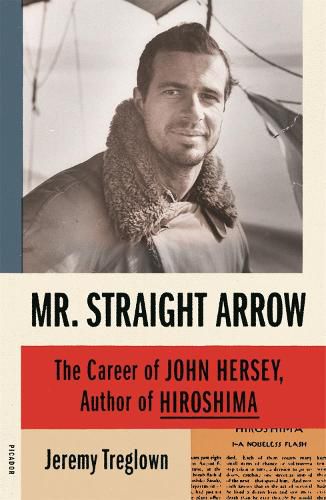Readings Newsletter
Become a Readings Member to make your shopping experience even easier.
Sign in or sign up for free!
You’re not far away from qualifying for FREE standard shipping within Australia
You’ve qualified for FREE standard shipping within Australia
The cart is loading…






Few are the books with as immediate an impact and as enduring a legacy as John Hersey’s Hiroshima. First published as an entire issue of The New Yorker in 1946, it was serialized in newspapers the world over and has never gone out of print. By conveying plainly the experiences of six survivors of the 1945 atomic bombing and its aftermath, Hersey brought to light the magnitude of nuclear war. And in his adoption of novelistic techniques, he prefigured the conventions of New Journalism. But how did Hersey-who was not Japanese, not an eyewitness, not a scientist-come to be the first person to communicate the experience to a global audience?
In Mr. Straight Arrow, Jeremy Treglown answers that question and shows that Hiroshima was not an aberration but was emblematic of the author’s lifework. By the time of Hiroshima’s publication, Hersey was already a famed war writer and had won a Pulitzer Prize for Fiction. He continued to publish journalism of immediate and pressing moral concern; his reporting from the Freedom Summer and his exposes of the Detroit riots resonate all too loudly today. But his obsessive doubts over the value of his work never ceased. Mr. Straight Arrow is an intimate, exacting study of the achievements and contradictions of Hersey’s career, which reveals the powers of a writer tirelessly committed to truth and social change.
$9.00 standard shipping within Australia
FREE standard shipping within Australia for orders over $100.00
Express & International shipping calculated at checkout
Stock availability can be subject to change without notice. We recommend calling the shop or contacting our online team to check availability of low stock items. Please see our Shopping Online page for more details.
Few are the books with as immediate an impact and as enduring a legacy as John Hersey’s Hiroshima. First published as an entire issue of The New Yorker in 1946, it was serialized in newspapers the world over and has never gone out of print. By conveying plainly the experiences of six survivors of the 1945 atomic bombing and its aftermath, Hersey brought to light the magnitude of nuclear war. And in his adoption of novelistic techniques, he prefigured the conventions of New Journalism. But how did Hersey-who was not Japanese, not an eyewitness, not a scientist-come to be the first person to communicate the experience to a global audience?
In Mr. Straight Arrow, Jeremy Treglown answers that question and shows that Hiroshima was not an aberration but was emblematic of the author’s lifework. By the time of Hiroshima’s publication, Hersey was already a famed war writer and had won a Pulitzer Prize for Fiction. He continued to publish journalism of immediate and pressing moral concern; his reporting from the Freedom Summer and his exposes of the Detroit riots resonate all too loudly today. But his obsessive doubts over the value of his work never ceased. Mr. Straight Arrow is an intimate, exacting study of the achievements and contradictions of Hersey’s career, which reveals the powers of a writer tirelessly committed to truth and social change.